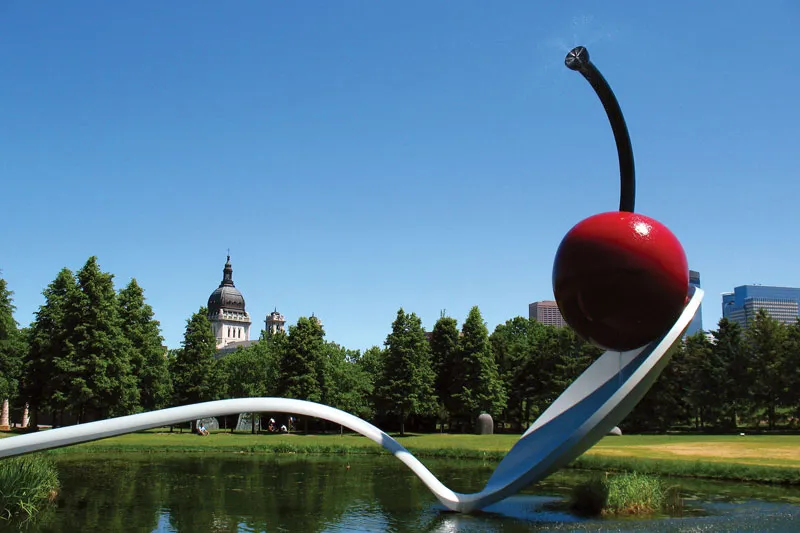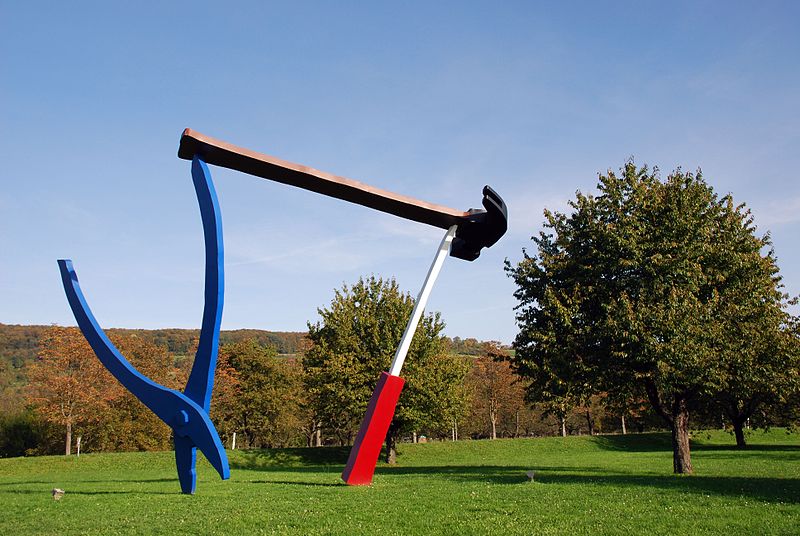The Swedish born artist, Claes Oldenburg (1927- 2022), started as a painter and general performance artist in advance of he phathomed with elements and varieties that took him to sculpture. As a make any difference of point, his early strategies on monumental sculpture have been first conceived as a collection of drawings andwatercolours that he referred to as Colossal Monuments.
Regardless of Oldenburg´s Art staying labeled as Pop artwork a detour defined his personal personal model: copy was replaced by monumental.
1. Claes Oldenburg is greatest regarded for his substantial-scale public sculptures, but you most likely did not know he began as a painter and efficiency artist. In point, some art historians and critics has named it as a “Sculptor who moves in between effectiveness and graphic art”

Claes Oldenburg with Big Toothpaste Tube (1964), 1970.
Foto: Keystone/Hulton Archive/Getty Illustrations or photos
2. Oldenburg treats his do the job as a totality in which crucial themes and motifs interweave in a assortment of media. He has created a radical contribution to the history of sculpture by rethinking its elements, types, and topic matter.
2.1. Each his performances and paintings are closely relevant with his perform in sculptures as we are about to see.
3. When he moved to New York in 1956, he became fascinated with the road existence: retail store home windows, neon lights, grafitti, and even trash. It was the sculptural alternatives of these objects that led to a shift in curiosity from painting to sculpture.
4. Basically, his early concepts on monumental sculpture have been 1st conceived as a sequence of drawings and watercolours that he named Colossal Monuments, and numerous of them remained unbuilt.
5. About the 60s, he established The Shop, a assortment of painted plaster copies of foods, apparel, jewellery, and other goods, with which he commenced discovering resources, scale, sorts, and so on.
6. At the similar time, he began making a sequence of happenings for which he produced giant objects designed of fabric stuffed with paper or rags. Afterwards on, he combined his perform with The Retail outlet and his happenings, and exhibited huge canvas-included, foam-rubber sculptures of an ice-product cone, a hamburger and a slice of cake.
7. That is how he commenced with his really well-known comfortable sculptures: by translating the medium of sculpture from tough to delicate, Oldenburg collapsed good surfaces into limp, deflated objects that were being subject matter to gravity and prospect.
8. Oldenburg was extra fascinated in banal solutions of shopper and everyday lifetime, in section influenced by the statements of happening and his lifestyle in NY, which led him to be regarded as as an legendary artist of the Pop-art motion.
9. Since the 80s, Oldenburg began doing the job on commissions for community areas or institutions. Some of his most popular sculptures had been created around this time, such as Spoonbridge and Cherry, Dropped Cone, Mistos (Match Address) and Shuttlecocks, between many others. All of these sculptures ended up made in collaboration with impartial critic and curator Coosje van Bruggen

Spoonbridge and Cherry, sculpture by Claes Oldenburg and Coosje van Bruggen, 1985–88 in the Minneapolis Sculpture Back garden of the Walker Art Center, Minneapolis, Minnesota.
Foto: © Michael Rubin/Shutterstock.com
10. His get the job done generally disrupts the operation of typical objects—challenging our perceptions and unsettling our routines.Pointed out for their exaggerated scale, daring colors, and daring playfulness, Oldenburg’s sculptures stand out as a provocative mix of the ubiquitous and the unruly.

Impression: Artistic Commons Attribution-Share Alike 3. Unporte

